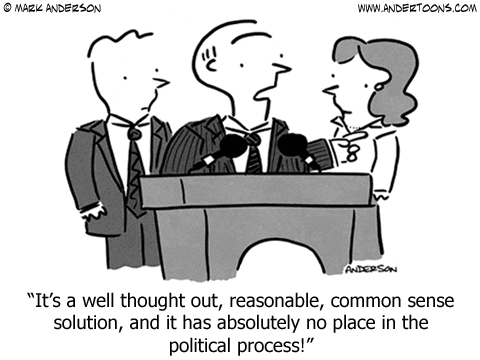BoSacks Speaks Out: How to Annoy Fans and Influence... Absolutely No One
By Bob Sacks
Sat, Oct 11, 2025

BoSacks Speaks Out: How to Annoy Fans and Influence... Absolutely No One
I am a magazine guy, ink in the veins, saddle-stitched soul, and a mark-up for every occasion. I know my way around marketing. Political marketing, however, feels like another country with a passport office that keeps odd hours. If political fundraising emails were print runs, my inbox would be a warehouse after a botched forecast, overflowing, repetitive, and scented with desperation. Both parties treat my email address like a golden goose, and they are in a hurry to make omelets.
Duplicate appeals arrive by the dozen. Subject lines multiply like rabbits. Apocalypse clocks scream that the earth will tilt off its axis at midnight, then somehow reset at 12:01. A simple truth from the pressroom applies here. Making your audience angry is not a growth strategy. When three “urgent” asks land before my second coffee, I do not reach for a credit card. I reach for “block sender.” If magazine publishers nagged subscribers like this, we would be pulping leftovers by Thursday and wondering why no one returns our calls.
Here is the core mistake. Political operations optimize for quick cash, not lasting permission. Vendors paid on volume deliver volume. More sends, more fake deadlines, more hollow urgency. Lists get treated like strip mines, not sustainable forests. Open rates fall, trust evaporates, and the only lever left is to shout louder into the void.
Publishing paid the tuition on these lessons. Campaigns can borrow the syllabus.
The Greatest Hits of Bad Political Email
1) The Countdown That Never Ends
Bad version:
Subject: “24 HOURS to Save Our Democracy: Act Now!”
One hour later: “12 Hours Remain”
Two hours later: “Final Call: 6 Hours Left”
Next morning: “6 Hours to Go, Again”
Why it fails:
- You train people to ignore urgency.
- Deadlines matter only when they are real.
- It feels manipulative, not persuasive.
2) The Frankenstein Sender
Bad version:
Yesterday I subscribed to Candidate A. Today I get email from Candidate A Finance, Friends of Candidate A, Candidate A’s Grassroots Shop, and “A Trusted Partner.” All point to the same donation page.
Why it fails:
- Shell-game sending destroys trust.
- People do not reward brands that play identity hide and seek.
- Deliverability tanks when recipients start marking everything as spam.
3) The Guilt Trip Mega-Thread
Bad version:
Subject: “We noticed you failed to step up”
Body text lists names of “neighbors” who donated, with a big red “still missing” stamp next to my name.
Why it fails:
- Public shaming feels cheap and creepy.
- Negative framing lowers conversion over time.
- You may also run into privacy and compliance problems.
4) The False Abandonment Nudge
Bad version:
Subject: “You started your donation”
I never clicked anything. The “resume your gift” button lands on a blank form.
Why it fails:
- Lying is not a funnel strategy.
- The second people sense trickery, they stop reading and start reporting.
5) The Partner Ping-Pong
Bad version:
I donate once. For the next two weeks I am bounced between allied committees, state parties, and PACs, each claiming the same “gap.”
Why it fails:
- Over-monetizing a fresh donor kills lifetime value.
- The real asset is permission. You traded it for a few quick dollars.
6) The Post-Unsubscribe Resurrection
Bad version:
I opt out. A week later I get “alerts” from a “coalition” I never joined, with the same branding and the same unsub link that does not work.
Why it fails:
- This is how brands die.
- It is also how sender reputations get blacklisted.
7) The Cold Open Big Ask
Bad version:
First touch ever: “Midnight deadline. We need $250 right now.” No context, no story, no value.
Why it fails:
- High ask without relationship equals low conversion.
- You trained me to ignore the next message before you earned the first click.
What Works, Borrowed from Magazine Land
- Frequency is a strategy, not a dare. There is no trophy for most emails before breakfast. Cap cadence. If you would not ship six covers this month, do not send six asks on Tuesday.
- Segment or suffer. A lapsed donor needs a different note than a first-time prospect. A policy wonk wants detail. A casual supporter wants a simple path to help. One “urgent” fits none.
- Lead with value, then ask. Magazines earn the right to sell with stories, reporting, humor, and useful charts. Political emails can do the same. Teach me something first, then make the case for support.
- Tell a story in chapters. Problem, plan, progress, payoff. That is a narrative. Treat the campaign like a limited series, not a fire alarm that never turns off.
- Respect the unsubscribe. When I opt out, I leave. Do not switch masks or route me to a “partner.” Permission is oxygen. Do not play games with the air supply.
- Keep the list clean. Dead addresses, spam traps, and purchased lists poison deliverability. Grow relationships, not just file size.
- Ask for more than money. Invite replies. Run a one-question poll. Offer a two-minute explainer. Host office hours on Zoom. Build community, not only transactions.
- Report back with receipts. Hit a goal, say so. Miss a goal, explain why and what changes next. Accountability buys loyalty faster than any exclamation point.
One Concrete Fix That Pays for Itself
Replace two “final notice” blasts each week with a single, plain-text note from the candidate or campaign manager that includes one paragraph of progress, one chart, and a single ask tied to that progress. Track three metrics for thirty days: unsubscribe rate, spam complaints, and average gift from repeat donors. In publishing, this trade reduced complaints and held revenue. You may be surprised to see average gift rise when people feel respected.
The BoSacks Checklist Before You Hit Send
- Would I print this email on my editorial page without embarrassment?
- Would I send it to my mother, no apology required?
- Could I receive it three times this week and still feel goodwill?
If the answer is no, that email belongs in drafts, not in the wild.
BoSacks Bottom Line:
Attention is not infinite. It is a subscription renewed one message at a time. The inbox is your front porch, not your dumping ground. Knock politely, bring a worthwhile story, and leave before you wear out the welcome mat. Follow that, and you will earn loyalty for years. Ignore it, and you will be shouting into an empty room, listening to your own “urgent” subject line echo.
That said, politicians have been abusing email for more than a decade, and somehow, they keep doing it. So maybe, despite all reason, it works, at least for now. But if they borrowed a little magazine logic, they might find a better way. Build relationships instead of breaking attention spans. Deliver content that earns trust instead of burning it. The return on respect always beats the quick hit of spammed desperation.
